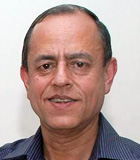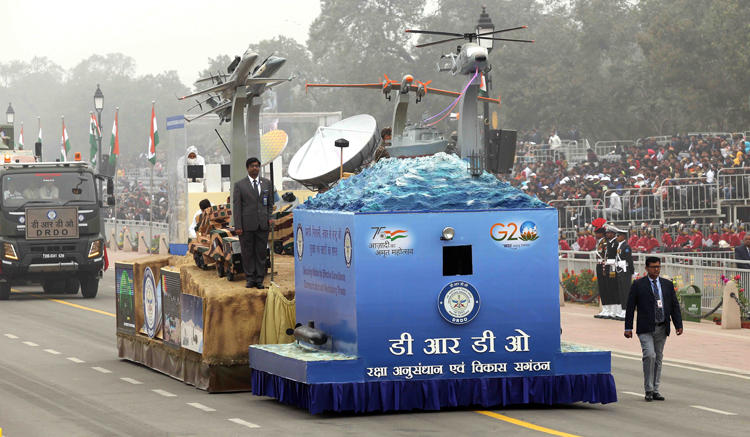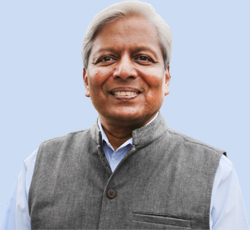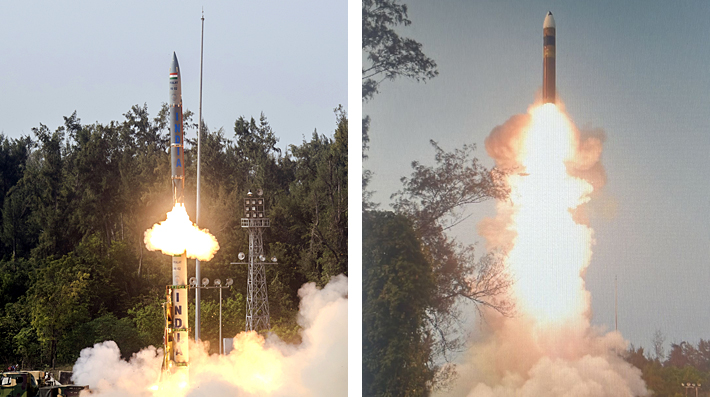INDIAN ARMED FORCES CHIEFS ON OUR RELENTLESS AND FOCUSED PUBLISHING EFFORTS

The insightful articles, inspiring narrations and analytical perspectives presented by the Editorial Team, establish an alluring connect with the reader. My compliments and best wishes to SP Guide Publications.

"Over the past 60 years, the growth of SP Guide Publications has mirrored the rising stature of Indian Navy. Its well-researched and informative magazines on Defence and Aerospace sector have served to shape an educated opinion of our military personnel, policy makers and the public alike. I wish SP's Publication team continued success, fair winds and following seas in all future endeavour!"

Since, its inception in 1964, SP Guide Publications has consistently demonstrated commitment to high-quality journalism in the aerospace and defence sectors, earning a well-deserved reputation as Asia's largest media house in this domain. I wish SP Guide Publications continued success in its pursuit of excellence.
- Global Partners Urged to Tap India's Shipbuilding Potential: Rajnath Singh at Samudra Utkarsh
- All about HAMMER Smart Precision Guided Weapon in India — “BEL-Safran Collaboration”
- India, Germany deepen defence ties as High Defence Committee charts ambitious plan
- G20 Summit: A Sign of Global Fracture
- True strategic autonomy will come only when our code is as indigenous as our hardware: Rajnath Singh
- India–Israel Joint Working Group Meeting on defence cooperation to boost technology sharing and co-development
Restructuring DRDO
Transforming DRDO will chart a new course for enhanced indigenous defence capabilities
 |
The Author is Former Director General of Information Systems and A Special Forces Veteran, Indian Army |

The government-appointed committee for restructuring the Defence Research and Development Organisation (DRDO), for developing high-end technologies for future warfare, has submitted its report to the government. The high-powered nine-member committee is headed by K. Vijay Raghavan, former Principal scientific Advisor to the government.
The government-appointed committee for restructuring the Defence Research and Development Organisation (DRDO), for developing high-end technologies for future warfare, has submitted its report to the government

former Principal Scientific
Advisor to the Government
Newspapers, citing sources in the Ministry of Defence (MoD), state that in addition to its main agenda of suggesting ways to reform the DRDO and create an indigenous defence production ecosystem, the report also recommends a larger role to the private sector in defence, limiting DRDO's role to research and development without being involved in developing prototypes or technology demonstrators. Also, any production and further development should be done by selected private players or public sector undertakings.
The gargantuan organisation of the DRDO, which also operates some 41 labs with total strength of about 30,000 (including some 5,000 scientists) in addition to over 10,000 contractual employees attached to various labs, has been criticised by the Comptroller and Auditor General (CAG) many times for delayed projects, costs overruns, sub-standard products and product costs higher than same products available off-the-shelf in the open market.
DRDO's failures over the decades have contributed significantly to India becoming the world's biggest weapons importer
In a report tabled in Parliament in December 2022, the CAG pointed out the DRDO's "history of failures" that included even "mission-mode" high-priority projects that have "high outcome certainty, as they depend on technologies that are already available, proven and readily accessible". According to the CAG, there were projects that the DRDO declared as success even though they did not achieve key objectives. "In 119 of 178 projects," said the CAG report, "the original time schedules could not be adhered to. In 49 cases, the additional time was in fact more than 100 per cent of the original timeframe. Overall, delays ranged from 16 to 500 per cent, and extensions for completion of projects were taken multiple times."

The DRDO's failures over the decades have contributed significantly to India becoming the world's biggest weapons importer. According to SIPRI's latest report, India continued to be the top weapons importer with 11 per cent share of global arms imports in 2018-22. DRDO's failures span from its inability in provisioning a state-of-the-art assault rifle, aero engine for jet fighter aircraft to a state-of-the-art unmanned aerial vehicle (UAV) for the Armed Forces despite the UAVs high importance in the battlefield observed in the Armenia-Azerbaijan conflict, Ukraine, Red Sea and arming of China's Peoples' Liberation Army (PLA). This has resulted in India depending on foreign procurement with the Israeli Searcher, Heron Mark-I and Mark II drones largely making up for the requirement of almost 150 UAVs in this category.
Recommendations of the K. Vijay Raghavan committee described in the media appear similar to the structure of America's Defense Advanced Research Projects Agency (DARPA)
Recommendations of the K. Vijay Raghavan committee described in the media, which appear similar to the structure of America's Defense Advanced Research Projects Agency (DARPA) are summarised as under:
Structure
- Establish Defence Technology Council (DTC) headed by the Prime Minister, with Defence Minister and NSA as Vice Presidents.
- Create empowered committee under DTC, co-headed by CDS and PM's Principal Scientific Advisor.
- Separate posts for Secretary DRDO and Chairman DRDO; one heading DDSTI focused on science and research for defence equipment and technology.
- Create DTC Secretariat with 17 technology DGs (seven from DRDO, six from Armed Forces, two academics and two industry advisors. Also, hire technical officers with specific expertise for a 3-5 year stint.
- Define National Defence Technology Roadmap.
- Defence technology hubs in top academic institutions.
- Creating national champions – for large systems.
Functional
- Establish a Board under the head of DRDO, with CTO, a chief armed forces interface officer, a chief administrative officer and a CFO; to oversee reinvention of DRDO and be accountable for functioning.
- Create tech, admin and financial board to support the apex board.
Manpower
- Reduce the median age of DRDO to 35.
- Hire 100 graduates annually from campus.
- Energise DRDO's lateral entry programme.
Laboratories
- Restructure 41 DRDO labs (out of 52?) into 10 national labs – in Delhi, Bengaluru (2), Hyderabad (2), Pune, Dehradun, Chennai, Vishakhapatnam and Chandigarh headed by directors and the units under them by research directors.
- Optimise utilisation and deployment of scientists.
- Increase lab interaction with outside world by creating green (can be accessed by outside researchers), amber and red zones.
- Streamline approval, purchase, appraisal process which are currently cumbersome.
Research
- DDSTI to focus on research in deep-tech areas.
- Focus on intelligence, surveillance and reconnaissance (ISR) technology, as well as in areas like life sciences.
- International collaboration.

The government has given the DRDO headquarters three months to assess, review and share feedback, if any, before implementing the panel's recommendations in a phased manner. The above mentioned Board being created under the head of DRDO (comprising the CTO, Armed Forces Interface Officer, Chief Administrative Officer and CFO) will need to work overtime to examine the complexities and give feedback to the government.
The government has given the DRDO headquarters three months to assess, review and share feedback, if any, before implementing the panel's recommendations in a phased manner
The crucial part will be how earnestly the recommendations of the K. Raghavan Committee are implemented. The need for the DRDO to focus on the core research and development is vital. There should also be pruning of the existing manpower of the DRDO, with surplus manpower merged into the Defence Public Sector Undertakings (DPSUs) established from restructuring of the erstwhile Ordnance Factory Board (OFB) and 41 Ordnance Factories (OF) since many of the functions amount to duplication.
Resistance from the DRDO towards overall restructuring can be expected especially whether DRDO should also be actively engaged in developing prototypes or technology demonstrators – for the simple reason of controlling more finances. But this should not be agreed by the government. Significantly, DARPA is only a funding agency with no laboratories or research staff; all research is conducted through contracts with universities, industry and government R&D institutions. According to its website, DARPA works on the principle that the US should be the initiator and not the victim of strategic technological surprises.





